Street Performers Around the Globe: Unveiling the Magic of Outdoor Artistry
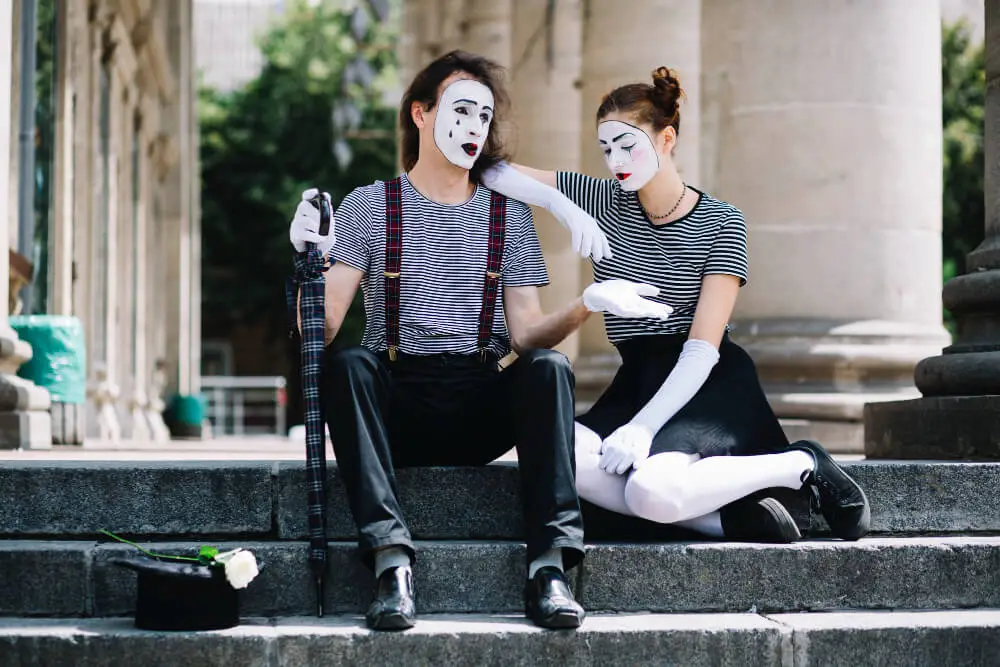
Updated On: March 30, 2024 by Yasmin Elwan
Street performers have long captured the imaginations of people worldwide, transforming public spaces into stages for the spontaneous and the spectacular. These artists bring art to the public in its most accessible form, blurring the boundaries between the audience and the performance. From the intricacies of a solo musician to the dynamic moves of a dance troupe, every act contributes to the vibrancy of the urban landscape.
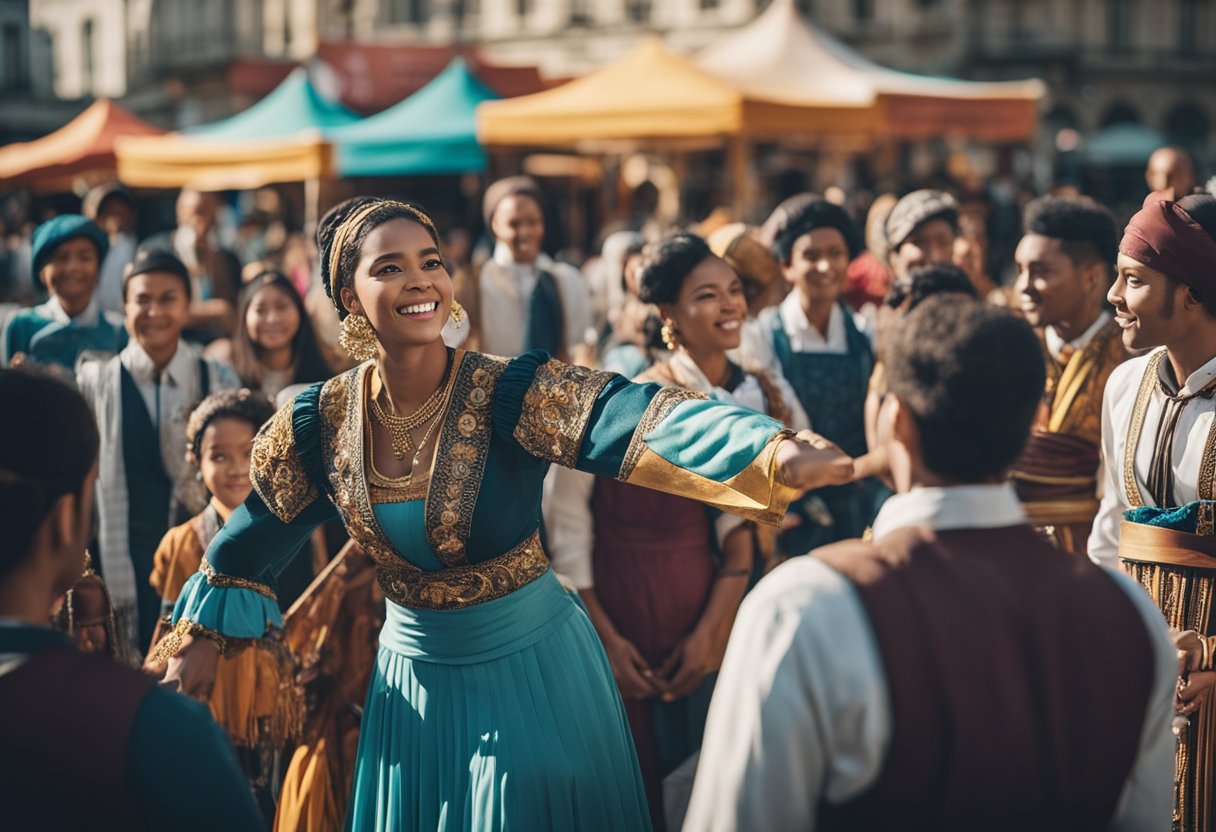
We see a rich tapestry of cultural expression in the bustling squares of Europe, on the sunlit boardwalks of California, and in the historic enclaves of Asia, where performers from various disciplines exhibit their art. Whether through the melodies of a guitar or the sleight of hand of a magician, street performers create a universal language that speaks to our shared human experience, fostering connections across cultural divides. Our stroll through the streets becomes a journey into the essence of creativity, where each corner offers a different narrative.
Busking, the act of performing in public spaces for donations, is not merely a means of livelihood but a testament to the enduring appeal of live performance in an increasingly digital world. The interaction with passersby lends immediacy and intimacy to their craft, a direct dialogue uninhibited by stage or screen. The economic impact of these performers is palpable, often breathing life into otherwise overlooked public areas and contributing to local economies.
The Essence of Street Performance
In exploring the vibrant world of street performance, we uncover both its historical significance and the rich tapestry of art forms it encompasses.
Artistic Roots and Cultural Significance
The roots of street performance are as old as civilisation itself, with historical accounts indicating that public displays of artistry date back to ancient times. Not merely a form of entertainment, these performances often bear deep cultural significance, reflecting society’s values, beliefs, and social narratives. Whether it is through the age-old tradition of storytelling or modern-day mime, each act is a thread in the fabric of our shared heritage.
One can witness the cultural diversity of street art in vibrant locales across the world, where artists express their cultural identity and community ties through their performances. Embracing everything from music and dance to magic and living statues, street performers are custodians of both traditional and contemporary artistic practices.
The Spectrum of Street Arts
Street art manifests in a multitude of forms, showcasing the breadth of creativity and artistic expression found across the globe. The spectrum ranges from:
- Music: Soloists, bands, and instrumentalists serenade passersby with melodies.
- Dance: An array of dancers who bring styles ranging from breakdancing to cultural folk dances,
- Visual Arts: Artists who create masterpieces on the pavement with chalk or paint, offer quick portraits or craft intricate sculptures.
- Performance Art: Acts that include escapology, fire-breathing, and acrobatics to captivate an audience.
- Character impersonation: Performers win over crowds with lifelike portrayals of iconic figures.
Each form represents a unique facet of street art, inviting onlookers to pause and experience moments of delight and awe amidst their daily routines. It’s a dynamic interplay of skill and improvisation, where the street becomes a stage and the audience, often unpredictable, becomes a part of the act. The constant evolution of these arts ensures that street performance remains an enduring and relevant form of collective and individual artistic expression.
Global Hotspots for Street Performers
In various cities across the globe, street performers have carved out spaces where art comes alive in public squares, inviting locals and tourists alike to pause and enjoy spontaneous live entertainment.
European Centres of Busking
London is a premier hotspot for buskers, with Covent Garden’s piazza resonating with the acts of talented magicians, jugglers, and opera singers. Performance art here is a daily affair, each act contributing to the area’s vibrant atmosphere (Novecore Blog). Paris, with its picturesque Montmartre district, offers another pulsating stage for artists, where the echoes of accordions blend with the city’s romantic ambience. The Edinburgh Festival Fringe transforms Scotland’s capital into a bustling hive of arts and culture every August, offering an unparalleled variety of street performances to an international audience.
American Stages: New York and Chicago
New York’s Times Square and the subways below are brimming with an electric mix of performers, from breakdancers to violinists. Each corner of the city tells a different story through performance. In Chicago, the streets of Wicker Park and the spaces near Millennium Park often serve as platforms for musicians and performers to showcase their art amidst the city’s architectural grandeur. These urban stages are etched in the cultural fabric of the United States’ metropolitan hearts.
Street Performance in Asia
The street culture in India encapsulates the nation’s rich cultural tapestry. Traditional theatrical arts like puppetry and folk dances regularly grace the streets, with each regional performance offering a unique glimpse into India’s diverse traditions. In Japan, street performance or ‘busking’ is increasingly recognised, supported by numerous festivals celebrating this art form, each presenting a slice of Japan’s dynamic and multifaceted street culture (Discovering Japan).
By highlighting these centres of street performance, we aim to share the spectrum of public entertainment that thrives worldwide. Our exploration reflects a broader vision of engaging with varying cultures and the spirit embedded in their artistic expressions.
Economic Aspects of Street Performance
In the realm of street performance, the financial stability of artists and the regulations that govern their craft are pivotal to their livelihood. We’ll explore the monetary intricacies of busking and the regulatory frameworks that impact performers globally.
The Financial Dynamics of Busking
The life of a busker revolves around monetary contributions from the audience, a practice which can be unpredictable and often varies based on location, time, and the artist’s appeal. From the pithy coins dropped into an open guitar case to the crumpled notes handed over after an awe-inspiring act, each donation represents a voluntary appreciation of the performer’s talent. This exchange contributes to the fabric of a city’s creative dynamism, yet it is challenged by the advent of cashless transactions, necessitating innovative solutions such as contactless payments or online platforms for financial support. Such adaptability is crucial for buskers as they navigate the evolving economic landscape of street performance.
Permits and Regulation Affairs
For many buskers, acquiring the right to perform in public spaces hinges on the permits and licenses issued by local authorities. Often, these are shrouded in bureaucracy and can vary widely from city to city. In some places, permits are essential and must be applied for, sometimes involving an audition process or a fee. There are locations where restrictions on where and when performances can occur are stringent, requiring buskers to be highly aware of the regulatory environment. Compliance with these regulations is not just about legality; it is about respecting the shared public spaces and the communities that converge in them.
Street performance, at its core, is an intersection where art meets the economy, and regulations serve as guiding principles. The livelihood of buskers and the cultural richness of urban landscapes rely on the smooth synergy of these elements.
Social Dynamics and Street Performance
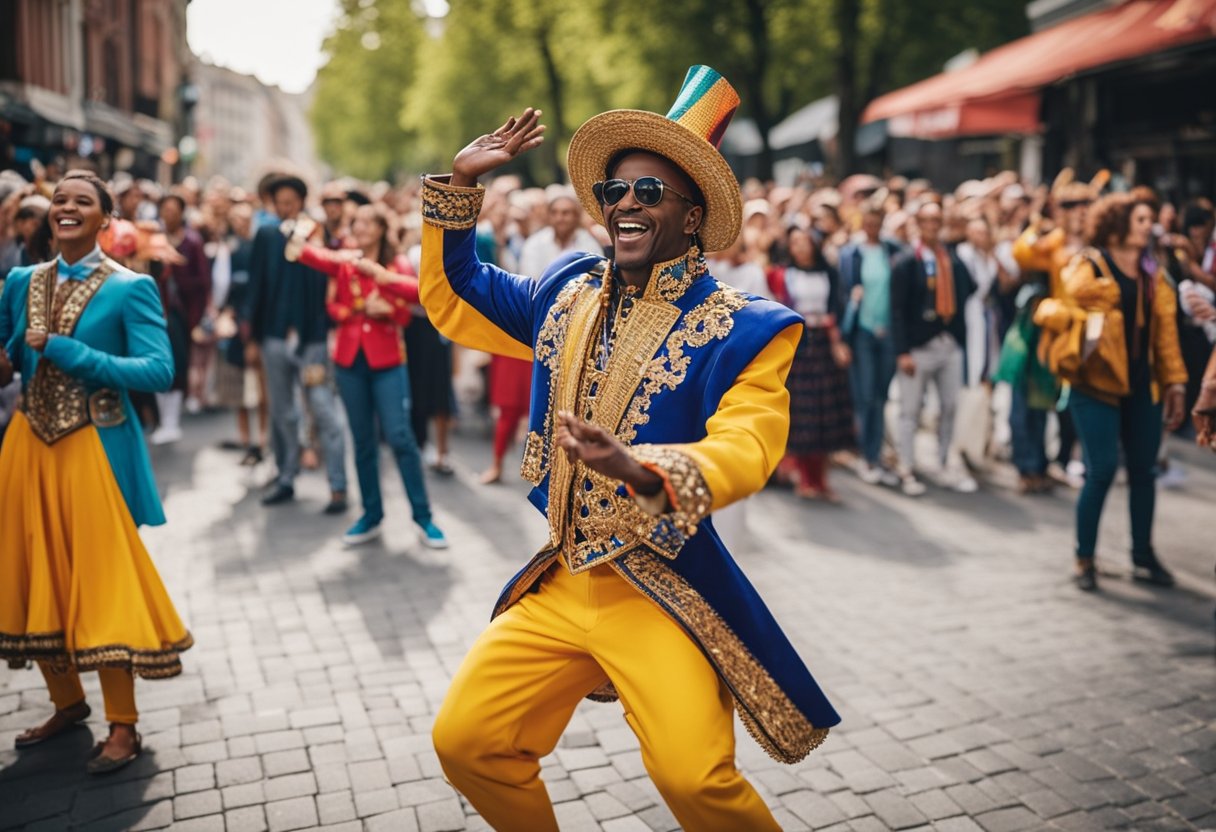
Street performance, encompassing a range of acts from musicians and dancers to other street artists, plays a significant role in shaping the social dynamics of public spaces. It enables vibrant interactions and fosters a sense of community among diverse audiences.
Public Interaction and Social Media
Artists and performers have adapted to the digital age by integrating social media into their public acts. Not only does this bridge the gap between performers and their audience, but it also brings a new dimension of engagement to street art. A musician may share their performances online, attracting viewers from around the globe and receiving instantaneous feedback, while a dancer might go viral, spreading hope and joy through their movements. Social media platforms have turned street performances from local displays into global phenomena.
The Role of Street Art in the Community
Street arts, such as murals and installations, contribute to the identity of public places, creating shared experiences that resonate with local communities. Artists often use these public canvases to reflect societal issues, offering new perspectives and fostering dialogue among the audience. Murals brighten urban landscapes, enabling residents and visitors to connect over collective symbols of their community’s identity and heritage.
In these ways, street performance is much more than entertainment; it’s a powerful form of social commentary and community building.
Street Performance and the Law
As we explore the fascinating world of street performance, it’s crucial to understand that while it is a celebrated form of public art, it is also regulated by law. The legality of street performances often hinges on acquiring the correct permits and licenses, which can vary significantly from city to city and country to country.
Understanding Street Performance Legality
In many parts of the world, street performance, commonly known as busking, is considered a legitimate way for artists to share their craft and earn a living. However, the laws and regulations surrounding busking can be complex. These laws serve to balance the artists’ right to freedom of expression with the community’s need for order and the shared use of public spaces. Regulations may include designated performance areas, times when performances are permitted, and restrictions on the level of noise. The legality of such performances is not only a matter of social order but also respects the urban fabric by ensuring that performances are integrated well into the city’s flow.
Acquiring Licenses and Permits
To busk in many cities, performers must acquire the necessary licenses or permits. This process varies across different jurisdictions. For example, a license may require a performer to audition before a panel, while in other cities, artists must simply register and pay a fee. Licenses help to regulate the number of buskers and ensure a variety of performances. They also often have stipulated conditions, such as not blocking pedestrian traffic or refraining from using amplification equipment.
- Procedures for acquiring a permit often involve the following steps:
- Submission of an application
- Payment of a fee (if required)
- Possible audition or assessment
- Receipt of the license, often with an identification badge
Acquiring the correct permissions is not only a legal formality; it reinforces the harmonious coexistence between street performers, local businesses, authorities, and the public. By adhering to the established protocols, buskers contribute to a vibrant street culture while respecting the laws that govern public spaces.
Historical Perspectives
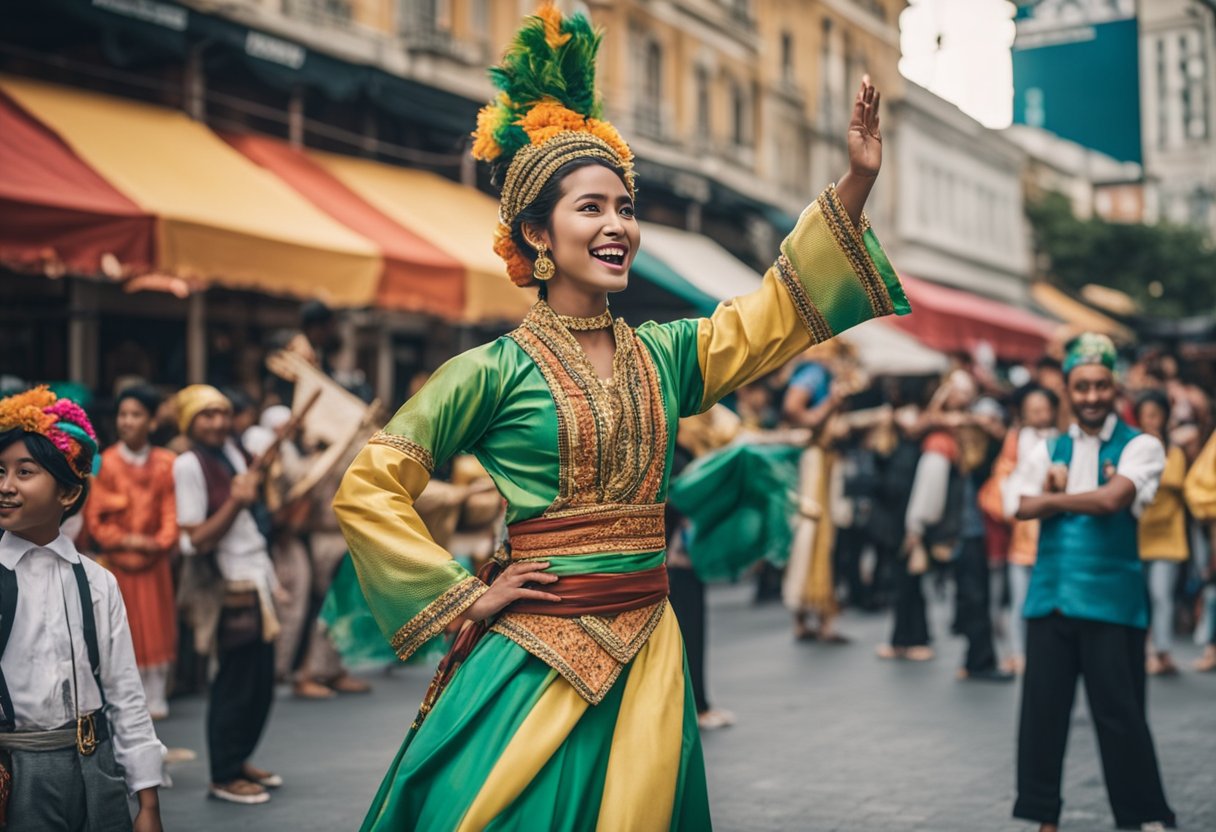
The Evolution of Street Performance
Street performance has a rich and varied history that traces back to antiquity. Artists have been engaging audiences in public spaces for gratuities across different cultures globally. It is an ancient practice that has continuously adapted to suit the social and cultural landscapes of the times. From the medieval minstrels traversing European towns to the traditional Japanese musicians captivating the streets with Shamisen sounds, public entertainment has been a staple in human socialisation and cultural expression.
The character and format of street performances have changed over time. In the past, it was not uncommon to find jugglers, actors, and storytellers congregating in marketplaces, sharing tales and showcasing talents that ranged from the extraordinary to the comedic. These performances were not just about entertainment; they were key for social cohesion and a means for the dissemination of news and cultural stories.
Notable Figures in Street Performance History
Throughout street performance history, there have been many notable figures whose impact still resonates today. For example, in the 19th century, Giuseppe Pinetti, an Italian magician and juggler, gained fame with his extraordinary feats and is often credited with bringing magic from the parlour to the streets. He lit the way for others to follow, shaping the landscape of street magic for future generations.
On the other hand, the USA has been home to some of the most influential street musicians. Take Robert Leroy Johnson, whose legendary blues performances on street corners have influenced countless musicians and shaped the genre as we know it. His music wasn’t confined to the streets but seeped into the very fabric of American culture, bridging gaps and pushing creative boundaries.
Our streets continue to echo with the performances from the past, each artist contributing to the ever-evolving canvas of public entertainment.
Art Forms and Mediums Explored
In the vibrant world of street performance, a multitude of art forms converge, creating a tapestry of visual and auditory experiences. We explore various mediums, from traditional painting and contemporary dance to the ever-evolving expressions of street art.
Convergence of Visual and Performing Arts
Visual arts such as painting and graffiti have become integral to the realm of public entertainment. Street performers often integrate these art forms into their acts, merging visual artistry with dynamic performances. Notable expressions include:
- Live painting: where artists create works in real-time, offering an immersive experience that captivates audiences.
- Graffiti displays: showcasing both the skill of the artists and the powerful messages depicted through vibrant murals and tags on urban canvases.
Music and Dance in the Urban Melody
Our streets resonate with the sounds of music and the rhythm of dance, which remain at the heart of street performance. These forms of expression provide a universal language that connects individuals from diverse backgrounds.
- Music encompasses a range of styles, from classical violin performances to the contemporary beats of beatboxers.
- Dance can vary from an improvised breakdance battle to meticulously choreographed contemporary dances that narrate stories through movement.
Innovative Aspects of Street Performance
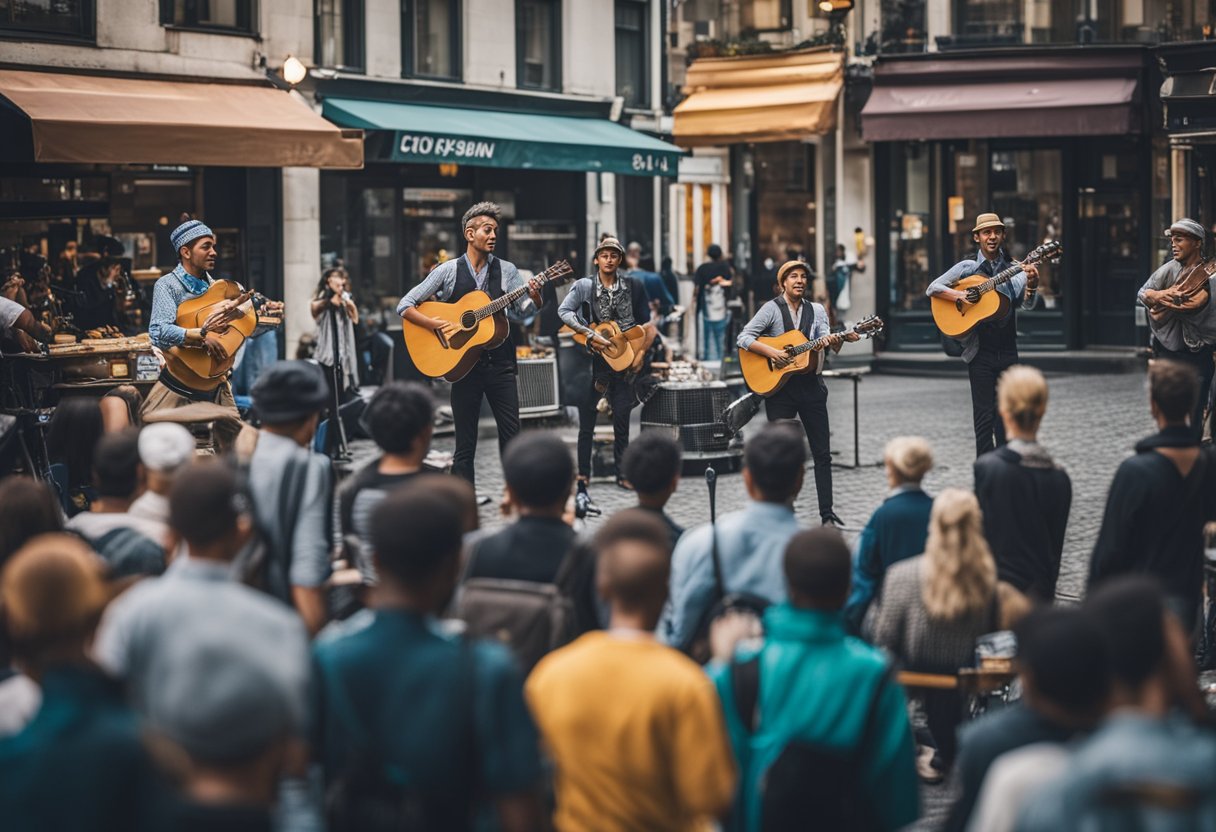
As we explore the art of street performance, we’re witnessing a renaissance fuelled by innovation. Traditional forms are being transformed by new influences and technologies, making performances more interactive and immersive.
The Influence of Technology
Technology has seeped into the realm of street performance, bringing forward a new era where creativity and digital tools intersect. With the advent of portable amplifiers, performers can now fill streets with jazz or hip-hop beats, creating an atmosphere that rivals indoor venues. Social media platforms have become virtual stages, offering resilience to performers who can now broadcast their acts to a global audience despite any local disruptions.
Emerging Trends and Genres
The landscape of street performance is constantly evolving. We’re seeing an emergence of cross-genre collaborations, where jazz saxophonists might improvise alongside breakdancers, creating a vibrant fusion of sound and movement. Moreover, social media has led to the rise of new genres, with performers blending traditional skills with modern-day narratives, often capturing the essence of contemporary culture and issues—a true showcase of resilience and adaptability in the arts.
Challenges and Achievements
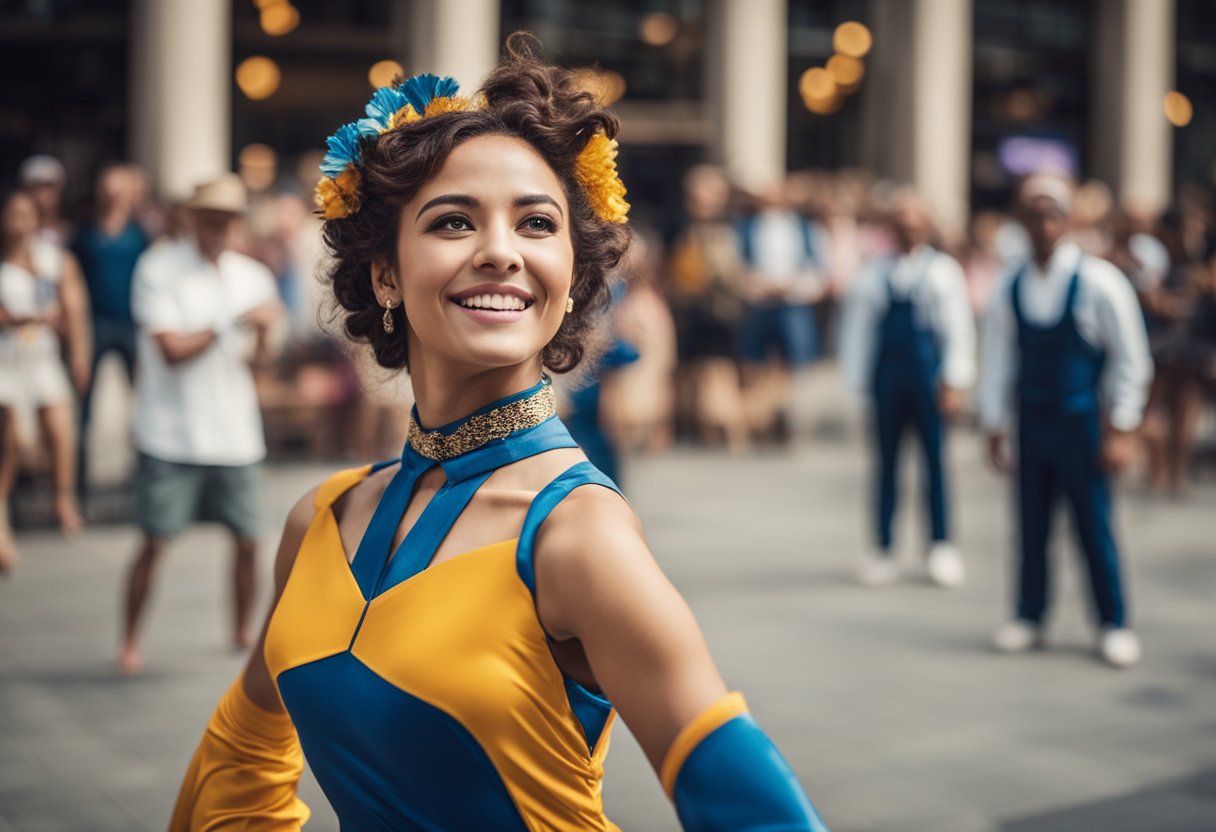
In the realm of street performance, artists consistently exhibit resilience as they navigate an array of challenges, yet amid these trials, numerous success stories arise, showcasing the indomitable spirit of these performers.
Overcoming Common Obstacles
Challenges such as the need for public space permissions, the unpredictability of audience sizes, and varying weather conditions often hinder street performers’ ability to showcase their art. Many seek to hope and motivation despite these adversities. Interviews with artists reveal that adaptability and perseverance are key to finding success in the most unlikely places. Each day presents an opportunity for learning and growth as performers tailor their craft to overcome these obstacles.
Success Stories and Breakthroughs
Resilience shines through in success stories where street performers have made significant breakthroughs. From being spotted by talent scouts to viral videos catapulting them to fame, these achievements demonstrate the potential rewards of persistence. Such artists often become beloved fixtures in their communities, with the public eager to support their passion and creativity. Their stories are testaments to the power of resilience and determination in the face of adversity.
- For some, what begins as a small pavement show turns into an international invitation to renowned festivals.
- Others have channelled audience admiration into successful crowdfunding campaigns for projects that extend beyond the street corners where they started.
Each success not only uplifts the individual artist but also inspires a new generation to embrace the art of street performance.
Profiles of Notable Street Performers
In exploring the colourful world of street art and performance, we encounter individuals whose creativity and talent have left an indelible mark on public spaces. They remind us that art isn’t confined to galleries—it thrives among us.
Influential Artists and Their Journey
- Banksy: The elusive figure known for his thought-provoking and politically charged artworks, Banksy has left his stencil-style prints on streets, walls, and bridges across the world. His anonymity and satirical pieces often prompt debate and conversation.
- ROA: This artist is renowned for his large, monochromatic animal murals that adorn urban landscapes. His distinctive style captures the dynamic between urbanisation and wildlife, telling a story of the animals that once inhabited these spaces.
- Blu: This street artist is acclaimed for massive, bold murals. Blu’s works often deliver potent social commentary, compelling viewers to confront societal and environmental issues.
- Aakash Nihalani: He is best known for his geometric tape artworks that play with perceptions of space and depth. By using vibrant colours and clean lines, Nihalani transforms ordinary sidewalks and walls into visual playgrounds.
- Tracy Chapman: Though not a visual artist, Tracy Chapman began her journey as a musician performing on the streets before entering the global stage with her soulful lyrics and melodies.
- Joshua Bell: In an experiment highlighting public appreciation of music, world-renowned violinist Joshua Bell showcased his craft incognito in a subway station, questioning the context in which we value art.
Techniques and Performance Styles
In our exploration of street performance, we observe a myriad of techniques that breathe life into public spaces, transforming sidewalks and squares into stages for remarkable displays of skill and creativity.
From Magic Tricks to Acrobatics
Street magic enthrals passers-by with sleight of hand and astonishing magic tricks that defy logic and expectation. Magicians may use cards, coins, and even objects from the audience to weave narratives of mystery and wonder. Meanwhile, acrobats take over the streets with gravity-defying routines. From juggling while balancing on a unicycle to performing handstands on stacked chairs, their physical prowess is a testament to the years of dedication required to perfect their art.
The Art of Music and Living Statues
Music is a cornerstone of street performance, with genres like jazz resonating through the subway tunnels of the metro station, where a classical violinist might share a melody. Not uncommon is the sight of a musician masterfully playing the harmonica, adding to the urban symphony. Simultaneously, living statues stand in stark, silent contrast, creating a dramatic tableau that commands attention through stillness and subtle movements, often surprising an unsuspecting audience when they least expect it. These performers, whether cloaked in metallic paint or period attire, invite us to pause and engage with the tableaux they create.
Frequently Asked Questions

In this section, we aim to address common inquiries regarding the nuances of street performance across the globe, from legal requirements to the economic viability of busking.
What legalities must street performers adhere to when busking in different countries?
Buskers worldwide must navigate a variety of laws that can differ significantly by location. In Canada, for instance, freedom of expression allows busking in public spaces, provided it’s unamplified. Performers should always research local regulations to ensure compliance.
Which types of acts are most commonly associated with street entertainment?
The array of acts found in street entertainment is vast, but some common forms include live music, dance, and character impersonation. These performers often contribute to the vibrant atmosphere of areas frequented by tourists and locals alike.
What specific skills are often showcased by the world’s most renowned buskers?
Renowned buskers typically excel in areas such as musical proficiency, creative visual arts, and advanced performance techniques. Their skills captivate audiences and often push the boundaries of what is expected in public entertainment.
How does street performance contribute to the cultural life of urban spaces?
Street performance serves an essential role in enriching the cultural tapestry of urban landscapes. Performers become ambassadors of culture, creating vibrant social environments that celebrate diversity and creativity.
Can one earn a living exclusively from street performance, and what factors influence this?
It is possible to make a living from street performance, though factors like location, the size of the audience, and the tendency of the crowd to tip can greatly affect earnings. Seasonality and competition from other entertainers also play a vital role.
What regulations typically govern the use of public spaces for busking performances?
Regulations for busking performances often include obtaining permits, adhering to noise ordinances, and respecting designated performance areas. These laws help balance the interests of performers, businesses, and the general public.






